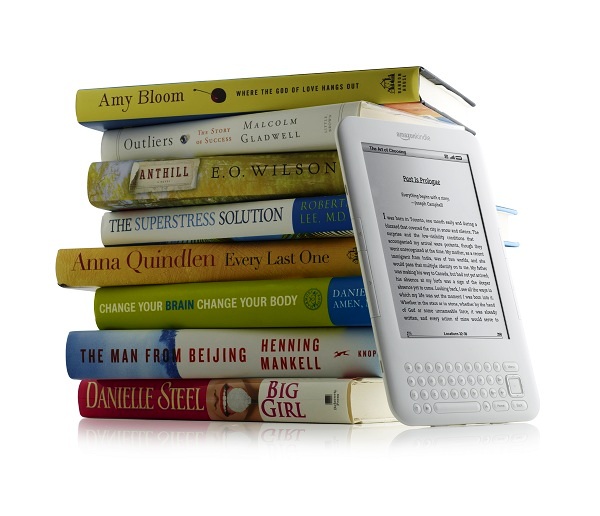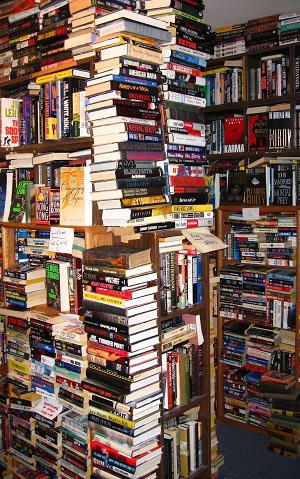The debate over the e-book or the ‘p-book’ (the latter being a term that makes me cringe), is the contentious issue in many a publishing circle. How are these reading trends evolving and can the two coexist happily? I don’t think it is quite that simple; different reading material will translate more appropriately to a particular platform, be it print, digital or audio. It is not a case of making every print book into an electronic text and marketing the material in a uniform manner, because each book has its own style, its own message and this must reflect in the chosen platform of delivery.

The publishing industry has witnessed a massive boom in e-book sales and the uptake of the electronic platform for reading, a reflection of the iPad and Kindle fad that recently swamped the market. But it is clear to see that e-books are not just a fad, they are very much here to stay, but in what capacity it is hard to say. This is because like any media hype, this reading trend is related to what is deemed fashionable. Yes, that’s right, reading can be fashionable – it can even be sexy. Well, to an extent anyway. Take Vogue for example – very sexy, and not just in content, but in its overall presentation and aesthetic appeal. This glossy magazine is created in such a way not only as a reflection, but a depiction, of the people, the labels and the icons that it represents. Similarly, a shiny new iPad is a fashion statement with aesthetic appeal and is a slick digital platform for presenting a digital edition of the magazine. If all this content can be found online with value-added material, why buy the print magazine at about £5 a piece?
Because of the experience. This is a serious user experience: the feel of those glossy pages, the image created as a reader of Vogue, and its ability to evoke an emotional response in the reader. The glossy magazine is associated with an image of the fashion-conscious woman settling down with a glass of full-bodied red. The indulgent, sexy image reflected in many an advert for luxurious chocolate brands; the attractive young woman in the silky, flowing skirt, biting seductively into an equally silky smooth bar of chocolate. It is all about the persona, creating an image. Of course said woman probably curses every bite she has to take, at the sheer thought of the calorific destruction this will be having upon her oh-so-svelte figure, the industry-standard juxtaposition of the beautiful slim woman eating copious amounts of chocolate. Does this juxtaposition translate to the world of books and reading trends?
Take the old Penguin Classics books for example. Often found on the shelves of second hand bookshops, these are tired-looking, slightly dog-eared, musty smelling artefacts. They have undergone the ‘library effect’, and this tells a story in itself – not just the content of the book, but the journey  that it has experienced before reaching that bookshelf, before reaching the hands of the reader. Think of how many people will have touched this book, travelled with it, sobbed over it, spilled coffee on it. Every note in the margin, every coffee ring, every tear in every page tells a story. It may not be a very interesting story, particularly if the reader is just a bit careless with their coffee mug, but it is a story all the same. So how does this translate to a Kindle? There have been rumours of adding a sensory feature to the Kindle which will emulate this old book smell – something I can only deem entirely farcical; just buy the book second hand if the smell means that much to you. I understand that we are moving forward with the times and with technological innovation and I am an advocate of the online platform for reading in particular sectors, but some things just don’t seem to translate quite so well to a digital platform. And these are the texts that evoke a personal response, a personality – they are more than just words on a page. Just as some people collect antiques, filling their homes with artefacts from past times, others instead opt for ultra-modern lines in various shades of white. This is something that the world of books is also susceptible to, particularly with genres such as literature, art and fashion, because it is all about the aesthetics, provoking a response in the reader and translating this beauty in a tangible form.
that it has experienced before reaching that bookshelf, before reaching the hands of the reader. Think of how many people will have touched this book, travelled with it, sobbed over it, spilled coffee on it. Every note in the margin, every coffee ring, every tear in every page tells a story. It may not be a very interesting story, particularly if the reader is just a bit careless with their coffee mug, but it is a story all the same. So how does this translate to a Kindle? There have been rumours of adding a sensory feature to the Kindle which will emulate this old book smell – something I can only deem entirely farcical; just buy the book second hand if the smell means that much to you. I understand that we are moving forward with the times and with technological innovation and I am an advocate of the online platform for reading in particular sectors, but some things just don’t seem to translate quite so well to a digital platform. And these are the texts that evoke a personal response, a personality – they are more than just words on a page. Just as some people collect antiques, filling their homes with artefacts from past times, others instead opt for ultra-modern lines in various shades of white. This is something that the world of books is also susceptible to, particularly with genres such as literature, art and fashion, because it is all about the aesthetics, provoking a response in the reader and translating this beauty in a tangible form.
The digital platform is a value-added, user experience interface, and there is no point in creating an online platform for a book, unless it is going to have added value. It has to appeal to both an existing audience, as well as creating an avenue for new readers of new platforms to explore. So can print and digital coexist in the world of books? I think they are going to have to, to some extent, otherwise we will all be doomed to reading off a black tablet and the beauty of the book will be no more.




